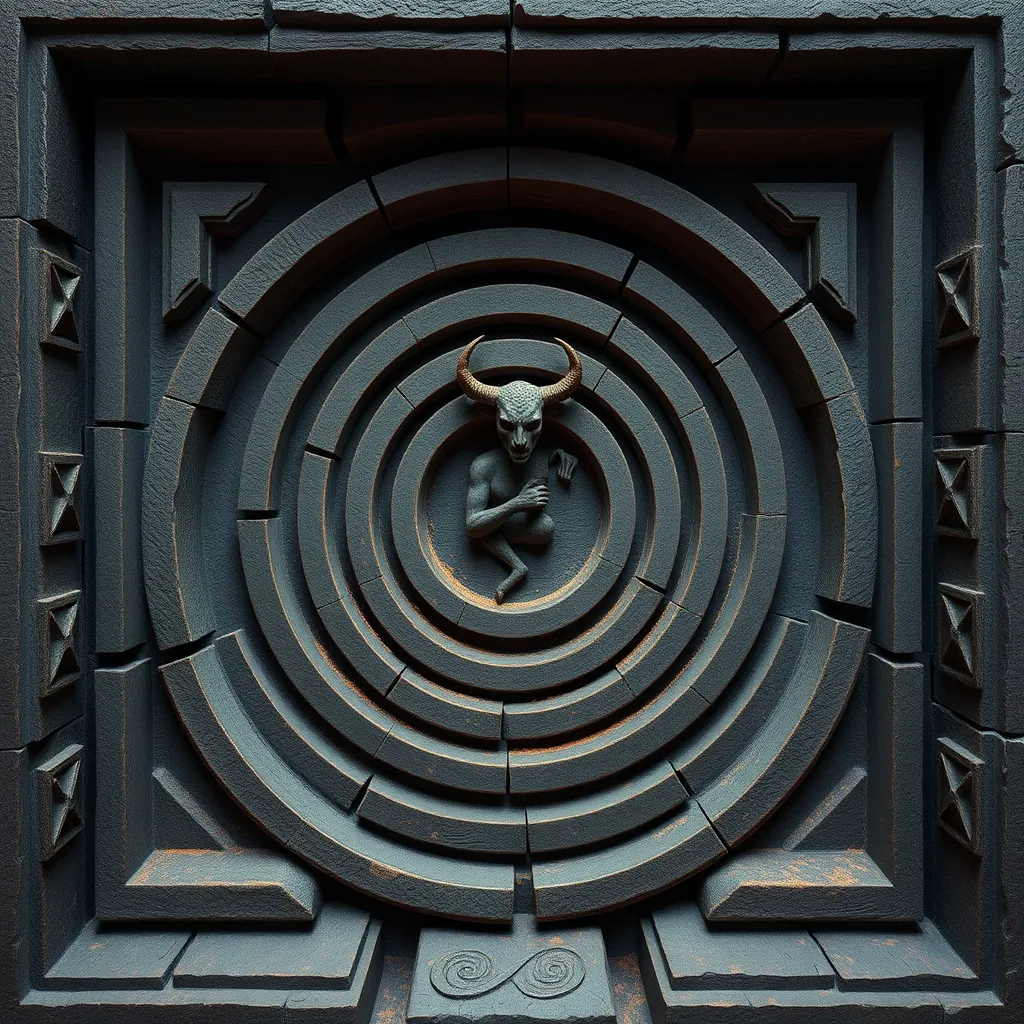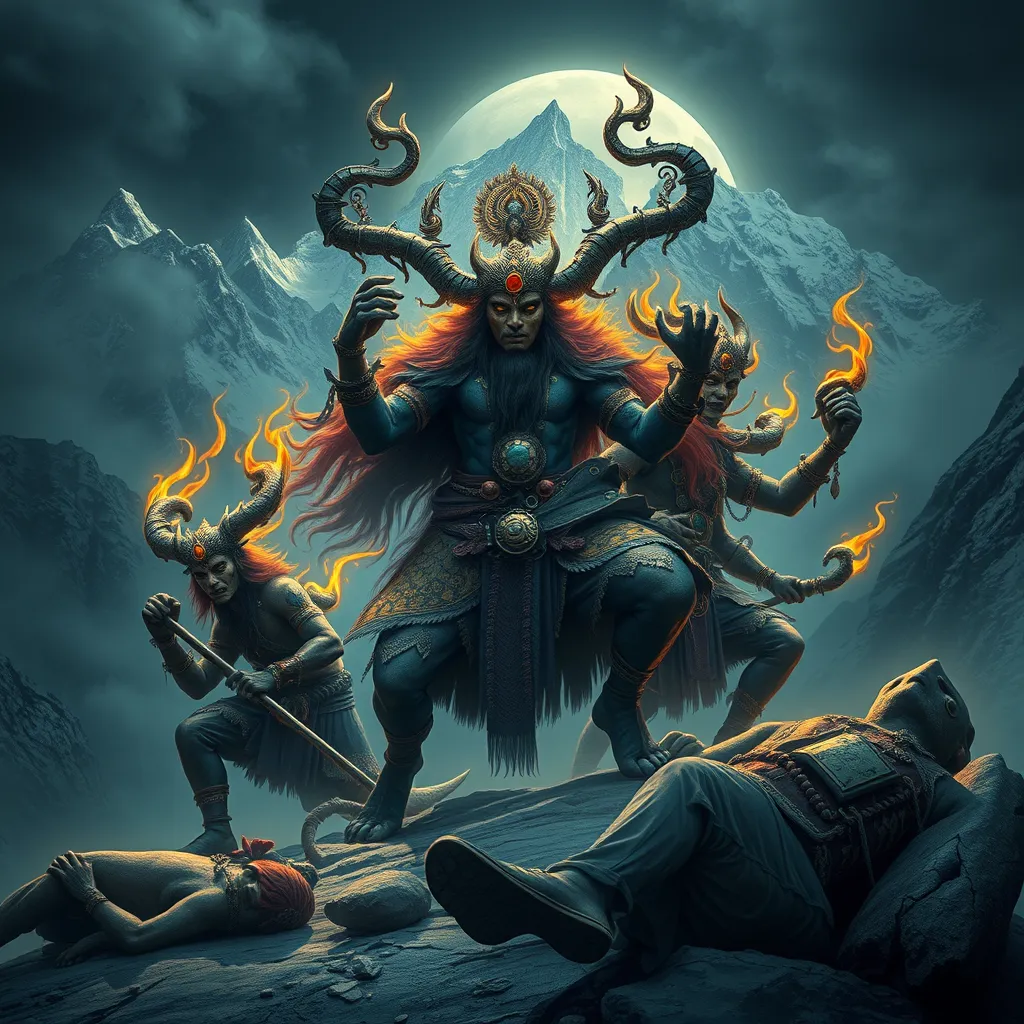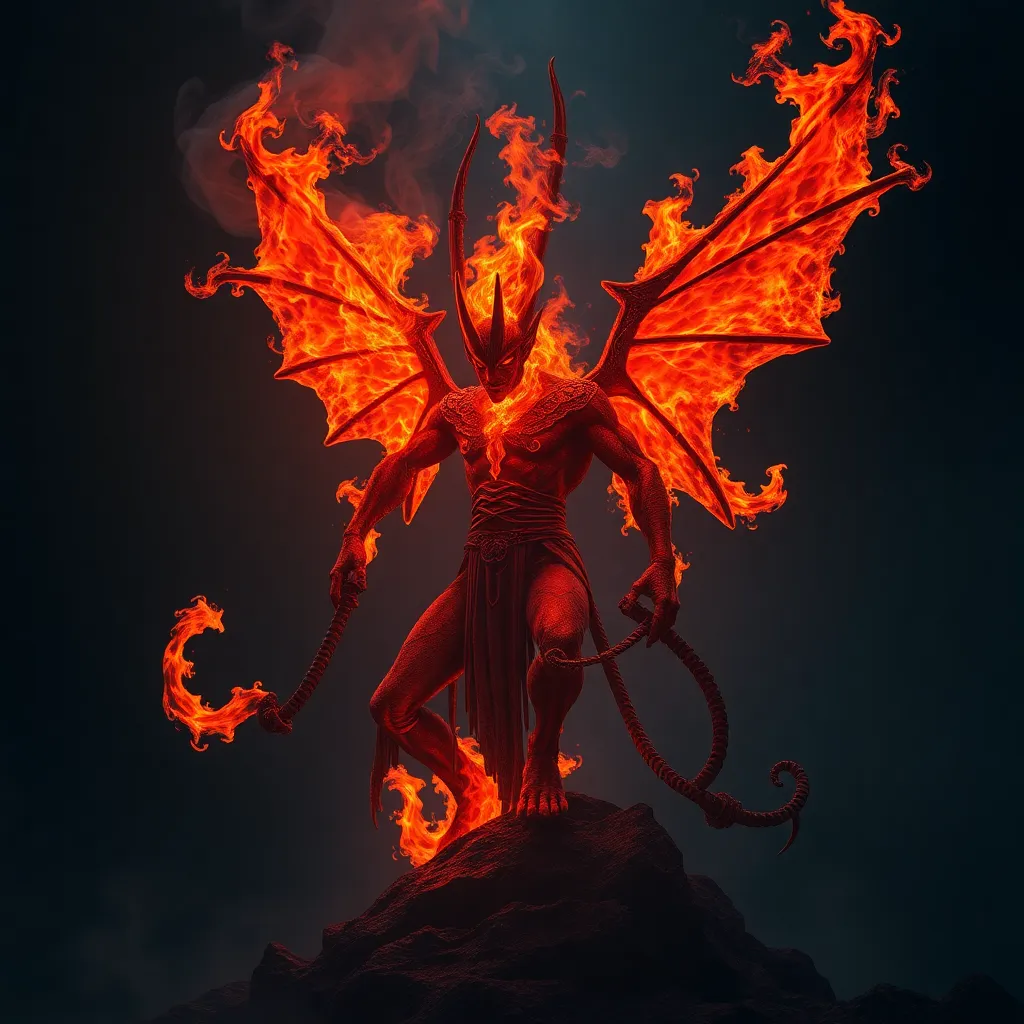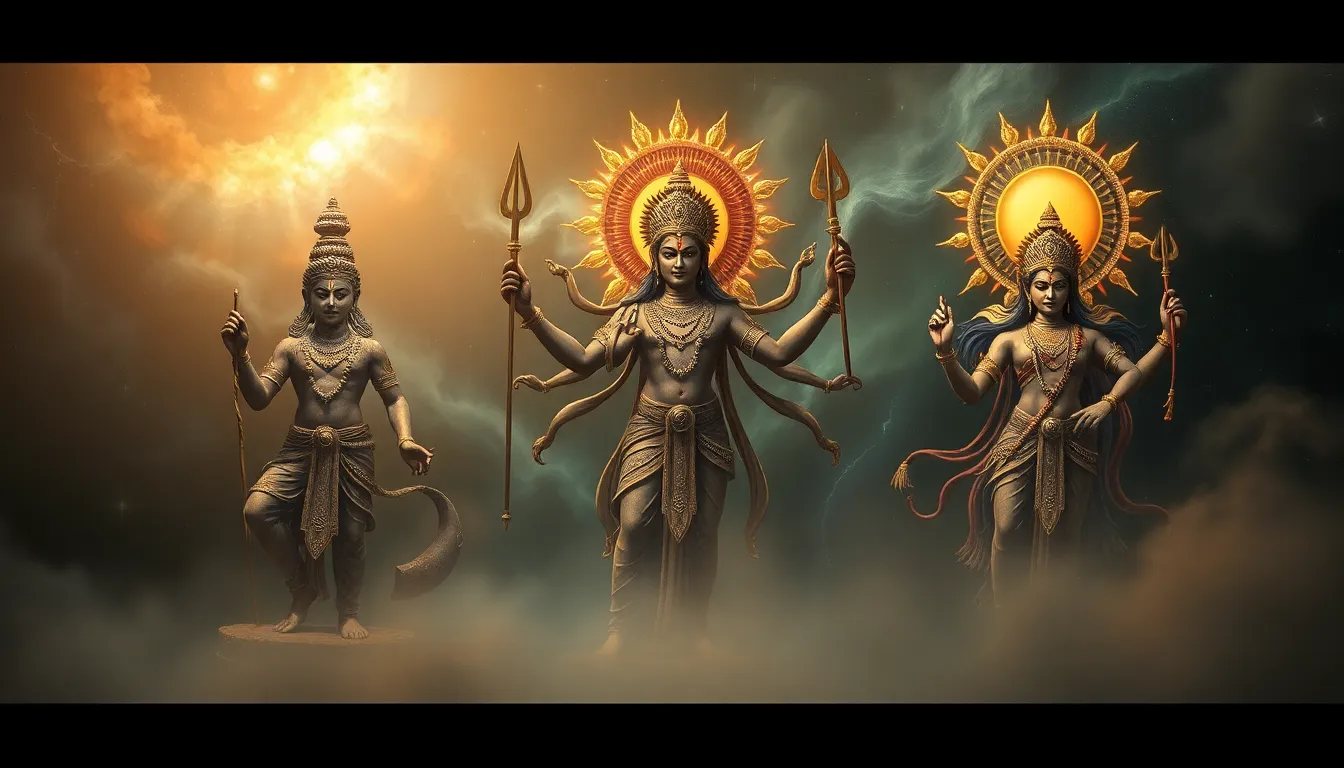The Minotaur’s Labyrinth: Exploring the Structure and Symbolism of the Maze
I. Introduction
The myth of the Minotaur, a creature with the body of a man and the head of a bull, is one of the most enduring tales from Greek mythology. It speaks not only of a monstrous being but also of the complex emotions and struggles that define the human experience. Central to this myth is the labyrinth, an intricate maze built to contain the Minotaur, symbolizing confusion and the challenges of life.
The labyrinth holds significant importance in Greek mythology, representing not only a physical structure but also a metaphor for the journey of life, filled with trials and tribulations. This article will explore the structure and symbolism of the labyrinth, delving into its historical context, architectural features, and its representation in modern culture.
II. Historical Context of the Minotaur and the Labyrinth
The origins of the Minotaur myth can be traced back to Minoan culture on the island of Crete, where archaeological evidence suggests a complex society with elaborate palaces and rituals. The myth itself likely evolved from local legends surrounding bull worship and the significance of the bull in Minoan society.
King Minos, the ruler of Crete, plays a pivotal role in the myth. According to legend, he commissioned the construction of the labyrinth to contain the Minotaur, which was born from a cursed union between his wife Pasiphaë and a majestic bull. The labyrinth served as a prison for the creature, reflecting Minos’s desire to control and contain chaos.
Over time, the narrative of the labyrinth has evolved, influenced by various cultural interpretations and retellings, illustrating the timeless nature of these themes of fear and confinement.
III. Architectural Structure of the Labyrinth
The design of the labyrinth is often described as an intricate network of pathways, designed specifically to confuse anyone who enters. Its layout is a masterful combination of twists, turns, and dead ends, making it nearly impossible to navigate without prior knowledge.
The significance of this complexity lies in its ability to reflect the confusion and challenges faced in life. Just as one might wander aimlessly in a labyrinth, individuals often find themselves lost in their struggles and emotions.
Historically, actual labyrinths have been constructed, such as the Cretan labyrinth, which may have inspired the myth. These structures were often circular and featured a series of concentric paths leading to a central point, embodying the same themes of complexity and entrapment.
IV. Symbolism of the Labyrinth
The labyrinth serves as a powerful symbol of the human psyche, representing the complexities of thought, emotion, and experience. It embodies the journey each individual takes through life, filled with uncertainty and challenges.
Several themes can be explored within this symbolism:
- Fear: The labyrinth represents the fears we face, often manifesting as obstacles in our lives.
- Entrapment: It illustrates the feeling of being trapped in situations that seem inescapable.
- The Journey: The path through the labyrinth mirrors the journey of self-discovery and personal growth.
The Minotaur itself is a potent symbol of inner demons and societal chaos. It represents the darker aspects of humanity—the fears, anger, and violence that can lurk beneath the surface, waiting to be confronted.
V. The Hero’s Journey: Theseus and the Labyrinth
Theseus, the hero of the myth, embarks on a quest to slay the Minotaur and free Athens from the tribute of young men and women sent to be sacrificed. The labyrinth is central to his journey, symbolizing the trials he must navigate to achieve his goals.
Ariadne, the daughter of King Minos, aids Theseus by providing him with a ball of thread, famously known as Ariadne’s thread. This thread serves as a metaphor for guidance and hope, allowing Theseus to find his way out of the labyrinth after confronting the Minotaur.
His triumph over the Minotaur can be seen as a narrative of personal transformation and the overcoming of adversity. It illustrates the idea that through facing our fears and challenges, we can emerge stronger and more enlightened.
VI. The Labyrinth in Modern Culture
The influence of the Minotaur myth extends far beyond ancient Greece, permeating literature, art, and popular culture. The themes of the labyrinth continue to resonate with contemporary audiences, prompting reinterpretations and retellings.
In literature, authors have explored the labyrinthine journey in various forms, often using it as a metaphor for the complexities of modern life. Works such as “The Hunger Games” and “Harry Potter” feature labyrinth-like challenges that echo the trials of Theseus.
In art, the labyrinth can symbolize the intricate nature of the human experience, often depicted in paintings and sculptures that invite the viewer to reflect on their own life journey.
Moreover, the labyrinth has found a place in contemporary psychology and philosophy, where it symbolizes the process of introspection and the search for meaning in a chaotic world.
VII. Conclusion
In summary, the labyrinth of the Minotaur serves as a multifaceted symbol that encapsulates the complexities of the human experience. From its intricate architectural structure to its rich symbolism, the labyrinth represents the trials we face in life and the journey towards self-discovery.
The enduring legacy of the Minotaur myth continues to captivate our cultural consciousness, reminding us of our inner struggles and the courage required to confront them. As we navigate the labyrinths of our own lives, we find relevance in these ancient tales, reflecting the timeless nature of human challenges.
VIII. Further Reading and Resources
For those interested in exploring the Minotaur and labyrinth symbolism further, the following resources are recommended:
- Books: “The Myth of the Minotaur” by Robert Graves and “Labyrinths: Selected Stories and Other Writings” by Jorge Luis Borges.
- Documentaries: “The Labyrinth: A Journey Through Myth and Mystery” available on various streaming platforms.
- Historical Sites: Visit the Palace of Knossos in Crete, where the labyrinth myth originated.



